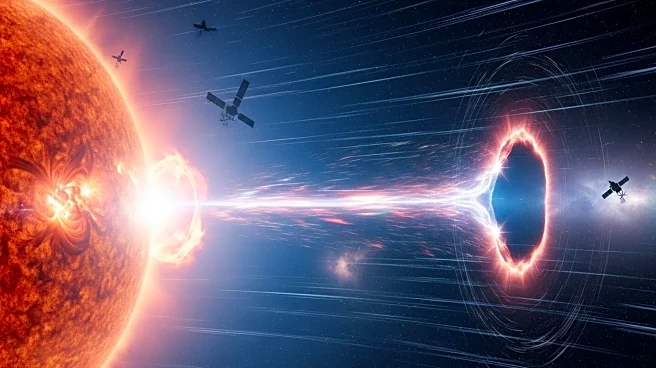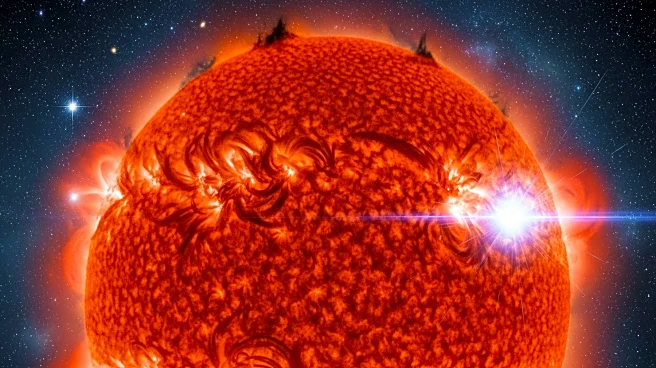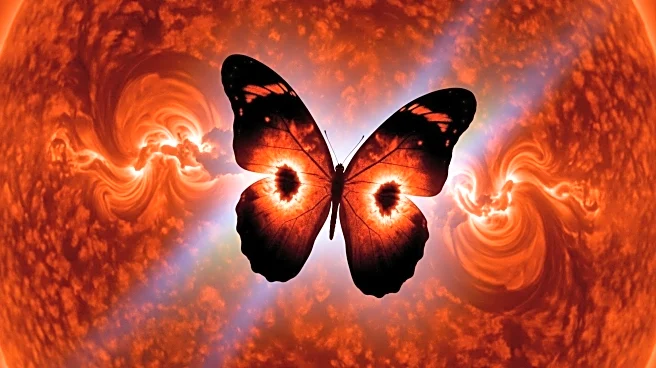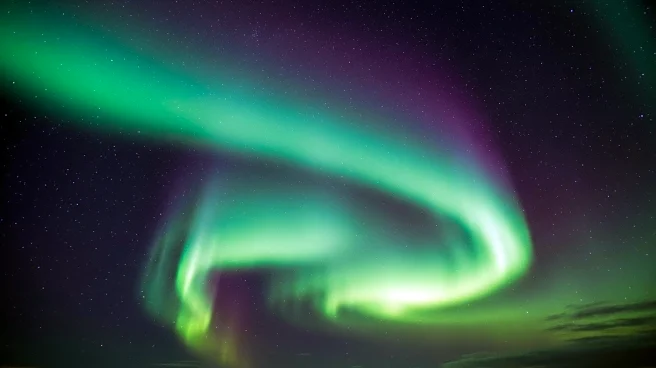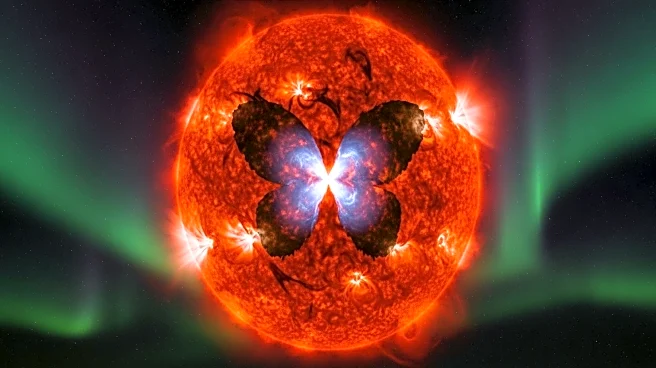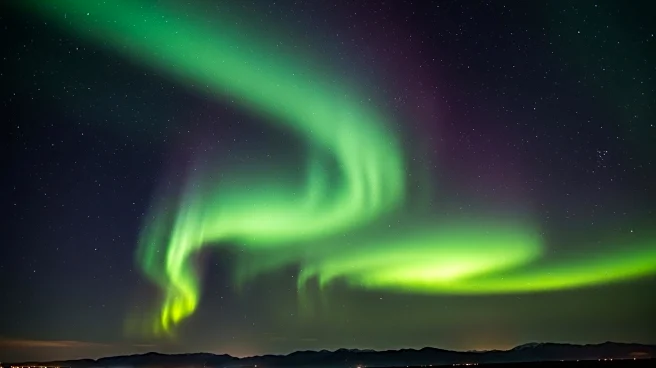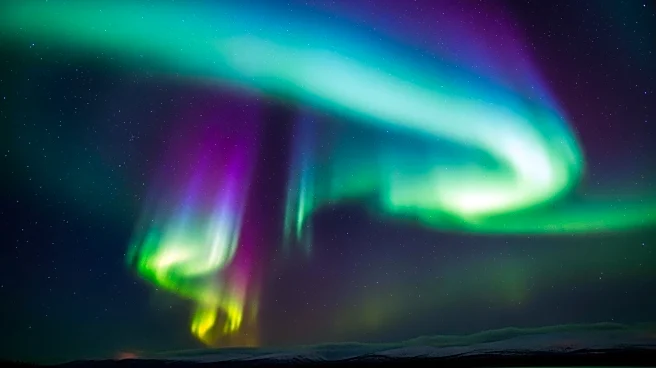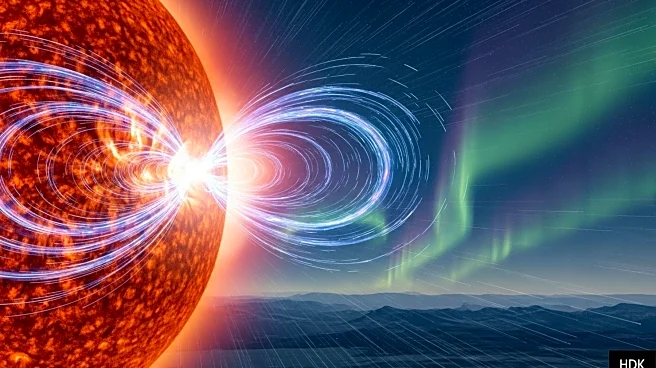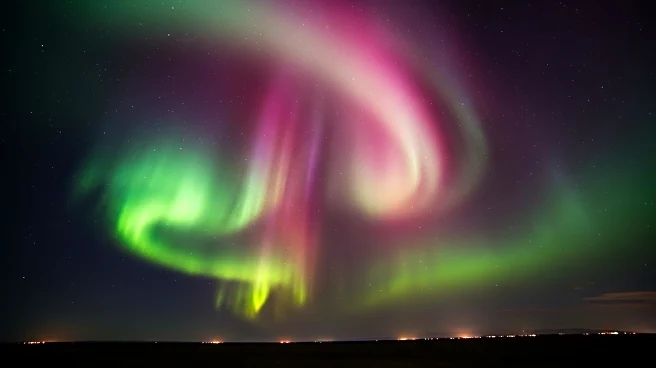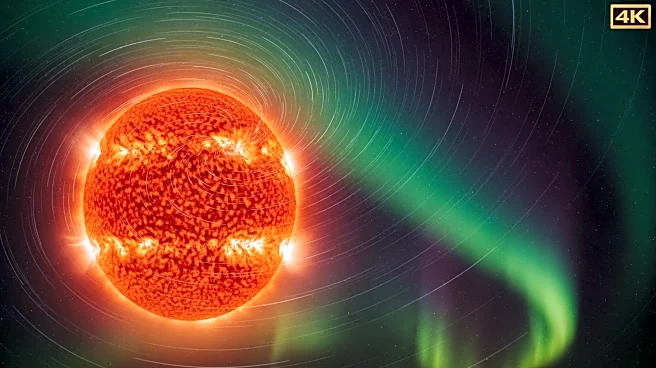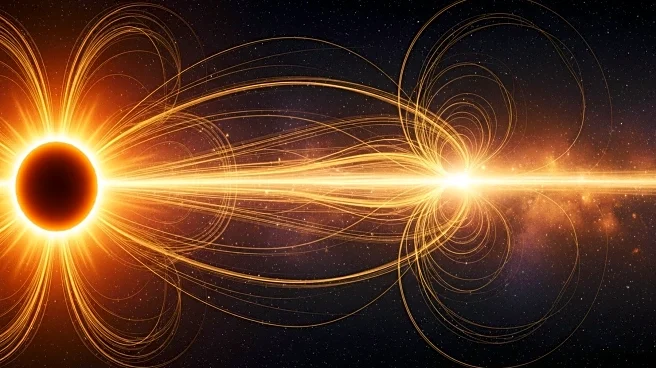What is the story about?
What's Happening?
A significant solar event is underway as a butterfly-shaped coronal hole on the Sun's surface is emitting high-speed solar winds towards Earth. This phenomenon is expected to cause geomagnetic storms, potentially visible as auroras in northern latitudes. The coronal hole spans approximately 310,000 miles across the Sun's surface, allowing solar particles to escape and interact with Earth's magnetic field. Forecasters predict a moderate G2-level geomagnetic storm, which could disrupt satellite communications, GPS systems, and power grids, particularly at higher latitudes. The storm is anticipated to occur between September 13 and 14, 2025, offering a unique opportunity for skywatchers to observe auroras.
Why It's Important?
The geomagnetic storm resulting from the solar winds could have significant implications for technology and infrastructure. Moderate disruptions in satellite communications and GPS systems could affect navigation and communication services, particularly in regions closer to the poles. Power grids may also experience fluctuations, necessitating preparedness from utility companies. Additionally, the event provides a rare chance for aurora enthusiasts to witness spectacular displays, potentially boosting tourism in areas known for aurora visibility. The timing of the storm, coinciding with the equinox, enhances the likelihood of aurora sightings due to increased geomagnetic activity.
What's Next?
As the solar wind approaches Earth, monitoring by space weather agencies will continue to assess the storm's intensity and potential impacts. The UK Met Office and NOAA Space Weather Prediction Center are closely observing the solar wind's magnetic field alignment with Earth's magnetosphere, which will determine the storm's strength. Stakeholders in satellite operations and power grid management are advised to prepare for possible disruptions. Skywatchers are encouraged to stay alert for aurora displays, particularly in regions like Canada, Alaska, and Scandinavia, where visibility is expected to be highest.
Beyond the Headlines
The occurrence of geomagnetic storms during equinoxes highlights the Russell-McPherron Effect, where Earth's magnetic poles align to enhance solar wind interactions. This seasonal phenomenon underscores the importance of understanding space weather patterns and their terrestrial impacts. Long-term, increased awareness and preparedness for geomagnetic storms can mitigate risks to critical infrastructure and improve resilience against space weather events.
AI Generated Content
Do you find this article useful?
